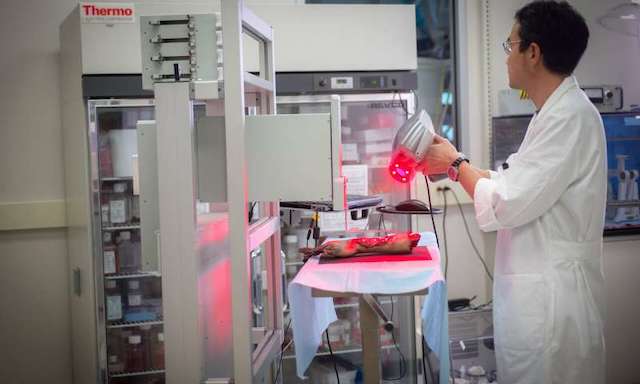
A new study has created such a mobile skin bioprinting system.
The bioprinting system allows bi-layered skin to be printed directly into a wound.
This could mean one day a bioprinter can be wheeled right to the bedside to treat large wounds or burns via printing skin with a patient’s own cells.
The study was conducted by researchers from the Wake Forest Institute for Regenerative Medicine (WFIRM).
Currently, chronic, large or non-healing wounds such as diabetic pressure ulcers and burning affect millions of people in the U.S.
They often require multiple treatments and high healthcare costs.
Although advanced technique like skin grafts is available to treat wounds and burns, it is difficult to adequately cover large wounds because there is not enough healthy skin to harvest.
Skin grafts from donors are an option for many patients, but it may lead to immune rejection.
In the present study, the researchers tried to solve the problem.
They mixed the skin cells into a hydrogel and placed them into the bioprinter.
Imagining tech was used to scan wounds and collect the data. A software could instruct the print heads which cells to deliver exactly where in the wound layer by layer.
This process could faster the formation of normal skin structure and function.
In the study, the team tested the system by printing skin directly onto pre-clinical models.
The researchers suggest that the new system could provide on-site management of extensive wounds.
It can scan and measure them in order to put the cells directly where they are needed to create new skin.
The new system could eliminate the need for painful skin grafts, which may cause further disfigurement in people with large wounds or burns.
It also can accelerate care delivery and decrease costs.
The team hopes in the near future they can conduct a clinical trial in humans.
The study lead author is Sean Murphy, Ph.D., a WFIRM assistant professor.
The research is published in Scientific Reports.
Copyright © 2019 Knowridge Science Report. All rights reserved.
Further reading: Scientific Reports.



